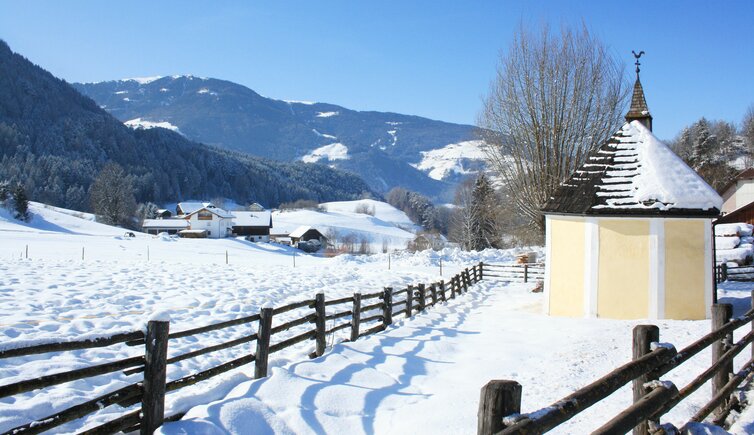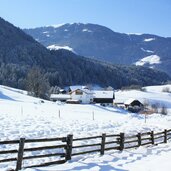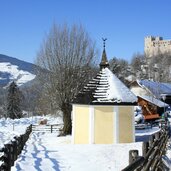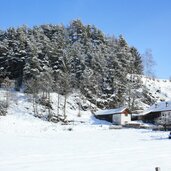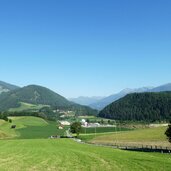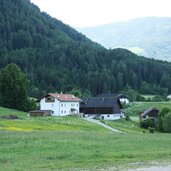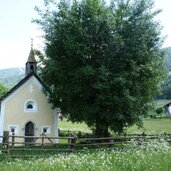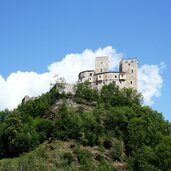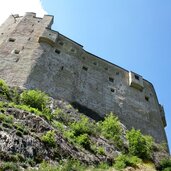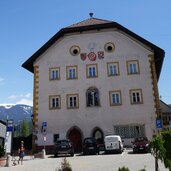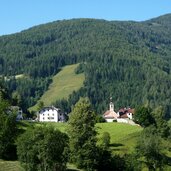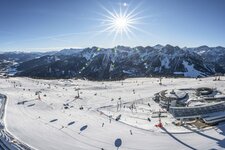San Michele Castle, one of the oldest castles in the Val Pusteria and the historic Tyrol, is perched on a rocky outcrop
Image gallery: Palù di San Lorenzo
The two hamlets of San Martino and - situated a little higher up - Palù lie in the area that rises gently to the south behind San Lorenzo. Here, surrounded by meadows at the entrance to the Val Badia and away from the main Val Pusteria road, a small road branches off, lined with the houses of Palù. Jakob Huter, who gave his name to the Hutterites, was born at the Proslhof farm.
Another significant building is the small, baroque Mary Help of Christians Chapel. It is one of two historic buildings, erected centuries ago, that tell much of the history of Palù di San Lorenzo (Moos). A vow led to the construction of the church in 1721, which was adorned with a painting of Mary Help of Christians, a Coronation of the Virgin, and depictions of Saint Veronica with the veil and Saint Sebastian. Later, an image of Josef Freinademetz, South Tyrol's only saint, was added.
Significantly older is San Michele Castle, or Michelsburg, one of the most important castles in the region, where the judges of San Michele once administered justice. Its construction is dated to the year 1091. Today, the impressive hilltop castle is privately owned and partially in ruins. A walk takes you from Palù - with view on the castle - along the Way of the Cross to Santa Maria di Sares. The path then continues to Castelbadia with its former convent and the eponymous Badia Castle.
You can reach the main village of San Lorenzo by bus in about five minutes. The colourful trains of the Val Pusteria Railway, on the other side, take you conveniently to Perca, where the cable car to the Plan de Corones hiking and skiing area departs from right next to the station. Its slopes are well-known, and the mountain museums attract many visitors. All around, the Dolomites rise up.
Mobility: Due to the construction of the Riggertal loop and safety-related works, sections of the Val Pusteria Railway will be closed until January 2026. A rail replacement bus service will be in operation. The three… read more
